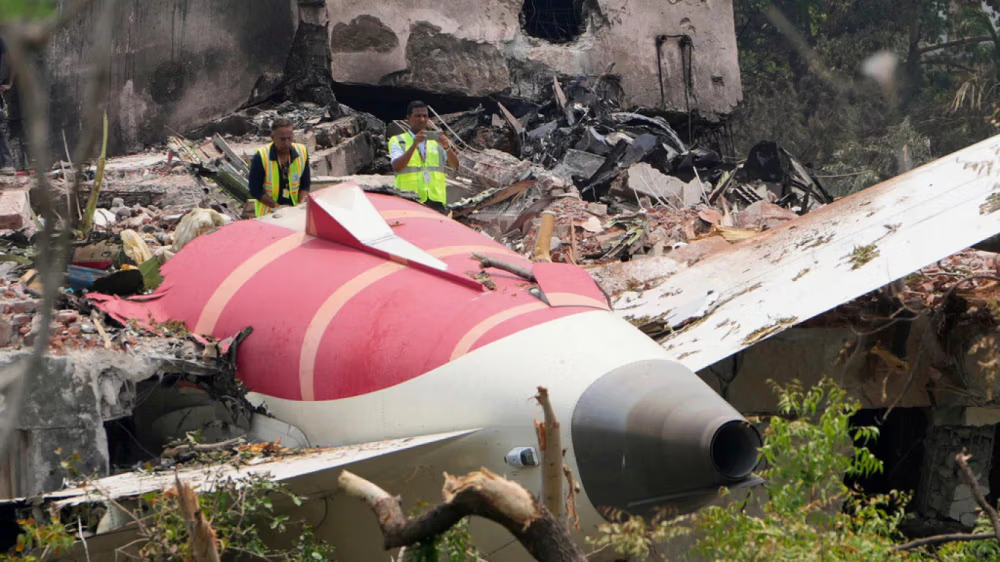A preliminary investigation into the Air India crash on June 12 has found that both engines on the Boeing 787-8 Dreamliner were shut down moments after takeoff due to fuel cutoff switches being flipped, causing the aircraft to lose thrust and crash within 30 seconds of becoming airborne. The Aircraft Accident Investigation Bureau (AAIB) of India released the report early Saturday, July 12, shedding light on the sequence of events that led to one of the deadliest aviation disasters in India’s recent history.
The London-bound Air India Flight AI171 had taken off from Ahmedabad with 230 passengers onboard. It reached a top speed of 180 knots shortly after leaving the runway, but within seconds, both Engine 1 and Engine 2 fuel control switches were moved from “RUN” to “CUTOFF” – one after the other within a single second.
The engines lost thrust, and although the crew quickly flipped the switches back to “RUN” and issued a “MAYDAY” distress call, the aircraft could not regain enough power or altitude and crashed into a nearby medical hostel, killing all but one passenger.
Here are 10 key findings from the AAIB preliminary report:
- Simultaneous Fuel Cutoff: Both engine fuel control switches transitioned from “RUN” to “CUTOFF” just seconds after takeoff, cutting thrust to zero.
- Cockpit Confusion: One pilot was heard on the cockpit voice recorder asking, “Why did you cut off?”—to which the other responded, “I didn’t.”
- Failed Restart: Although the switches were returned to “RUN,” only one engine showed brief signs of restarting before the aircraft lost altitude.
- Loss of Power Confirmed: The deployment of the aircraft’s Ram Air Turbine (RAT) confirmed a total electrical and power failure.
- No Bird Strike or Sabotage: The investigation ruled out external interference or sabotage.
- Clean Fuel: Fuel tests confirmed no contamination, eliminating fuel quality as a factor.
- Overlooked FAA Bulletin: A 2018 FAA safety bulletin warned of possible issues with switch lock mechanisms, but it wasn’t mandatory and had not been applied to this aircraft.
- No Technical Faults Found: No preliminary evidence of mechanical or engine failure was identified.
- Fit and Licensed Crew: Both pilots were fit for duty, adequately rested, and fully licensed.
- Tragic Timeline: The flight lasted just 30 seconds before crashing into the hostel, killing 229 of the 230 passengers and 19 people on the ground.
Aviation experts stressed that the engine switches are designed with locking mechanisms and are positioned behind the thrust levers to prevent accidental activation. The report did not state how the switches were triggered or assign fault, and no immediate recommendations were issued to Boeing.
In an official statement, Air India said it is “working closely with stakeholders, including regulators,” and is fully cooperating with the investigation.
The AAIB will continue its analysis with a full final report expected in the coming months. For now, the findings raise urgent questions about cockpit operations, flight crew coordination, and aircraft safety protocols.





